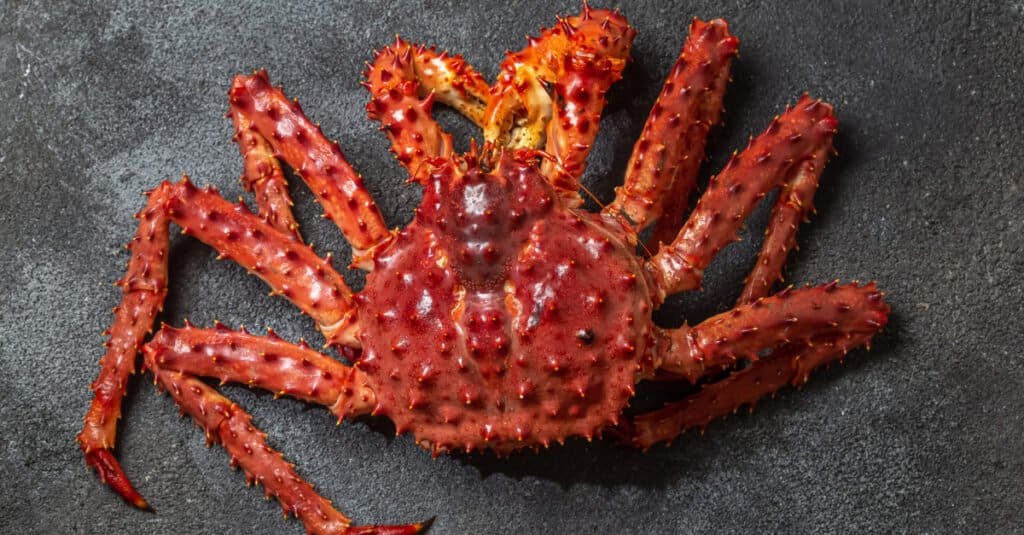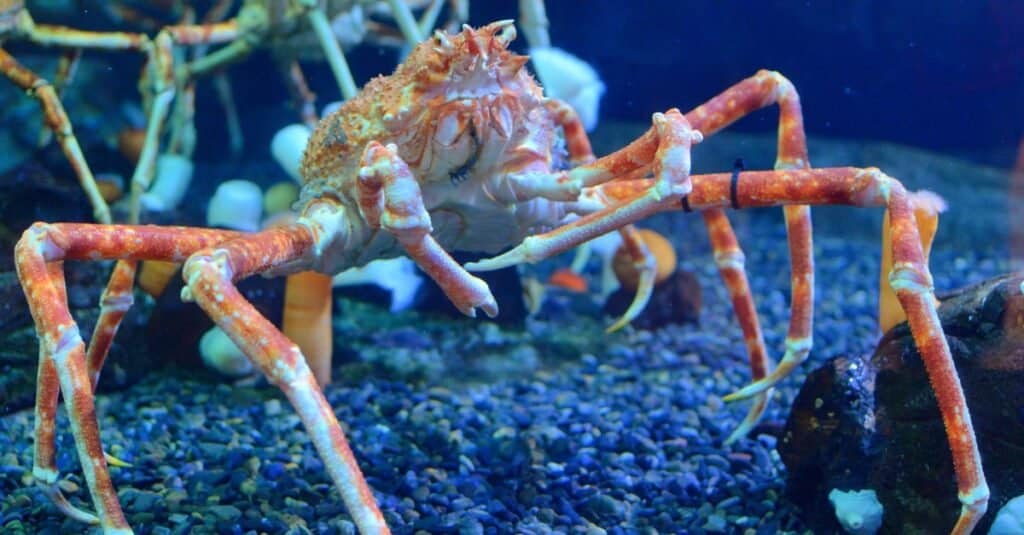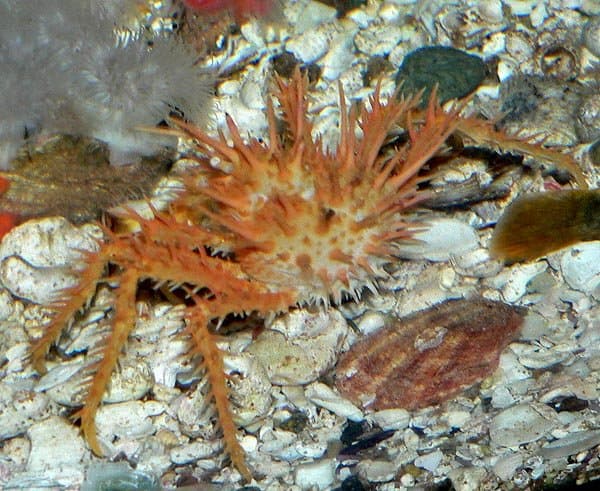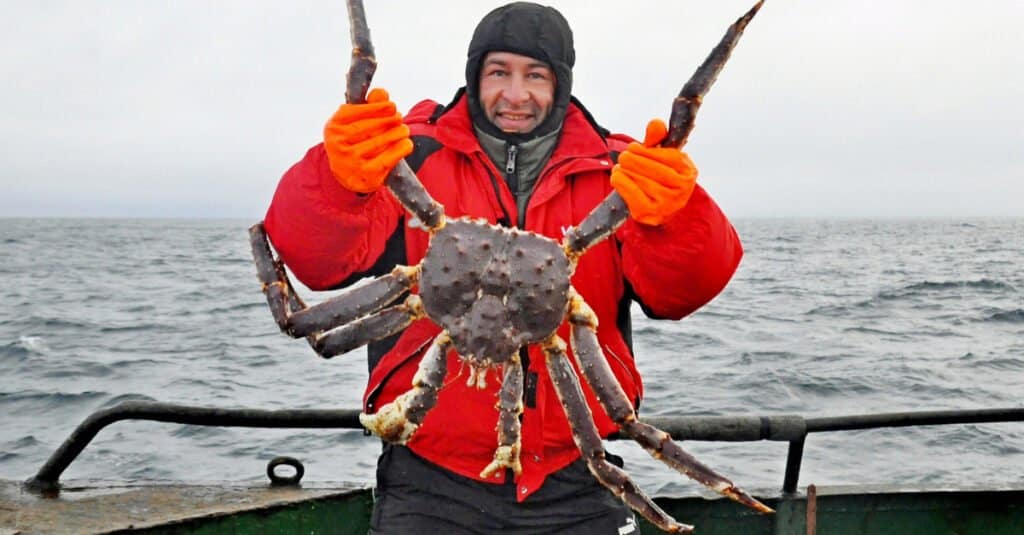There are about 62 crab species found in the British seas, while approximately 4,500 crab species are recognized worldwide, including the spider crab vs king crab. If that isn’t enough, did you know that while a Spider crab is a “Snow crab,” not all Snow crabs are Spider crabs? Snow crabs are a collective term for a variety of crab species, including Queen crabs, Spider crabs, and Opilio crabs. Sorting crabs is a challenging task. We’re going to focus on the fundamental distinctions between the Spider crab and the King crab in this article to help you understand them better.
Spider Crab vs King Crab: A Comparison

| Key Differences | Spider Crab | King Crab |
|---|---|---|
| Size | Up to 12 feet; up to 40 lbs. | 5 – 6 feet wide; 6 – 20 lbs. |
| Looks | Long legs, Orange, Spider-Like | Brownish to Bluish Red |
| Location | The Pacific Ocean near Japan | Pacific and Arctic Oceans |
| Eating Habits | Carcasses, Plants, Fish | Algae, Worms, Mussels, Small Fish |
| Consumption | $20 – $35 a pound | $60 – $70 a pound |
| Life Expectancy | Up to 100 years | Up to 30 years |
Key Differences Between Spider Crab vs King Crab

Spider crabs have much longer legs compared to the king crab.
©Larisa Blinova/Shutterstock.com
There are many key differences between spider crabs and king crabs. Spider crabs all have a body that is noticeably longer than it is wide, as well as extremely long legs, while the legs of the king crab are far shorter. Additionally, the king crab is a decapod crustacean, not a crab like the spider crab. King crabs thrive in cold water, while spider crabs prefer temperate seas. Both crabs are large and as a result, are routinely harvested and sold as food.
Let’s talk about all of these differences now.
Appearance

Spider crabs are significantly larger than king crabs.
©Sean Pavone/Shutterstock.com
Spider Crab vs King Crab: Size
One of the largest spider crabs in existence, the Japanese spider crab may grow up to 12 feet in length and weigh as much as 41 pounds! King crabs are usually between 6- and 10-pound on average. However, some King crabs weigh as much as 20 pounds, and they have a limb span of 6 feet.
Spider Crab vs King Crab: Looks
The largest species of Spider crab is the Japanese spider crab. This crab has the longest legs of any arthropod known. With lengthy legs and spherical shells, they resemble spiders, as their name suggests. Their bodies are orange in color, and their legs have white spots. Red King crabs have sharp spines and range in hue from brownish to bluish red. They have one pair of claws and three pairs of walking legs.
Habits and Habitats

King crabs are found in frigid seas while spider crabs prefer temperate waters.
©Stan Shebs, CC BY-SA 3.0, via Wikimedia Commons – License
Spider Crab vs King Crab: Geographic Location
King crabs are found in the frigid Pacific and Arctic oceans, off the shores of Japan, Alaska, British Columbia, and Canada. King crabs have also been brought to the Atlantic Ocean’s northernmost regions, near Russia. Each year, king crabs migrate to shallow ocean regions to breed.
Spider crabs are primarily found in the temperate Pacific Ocean off the coast of Japan. They reside in shallow water between 150 and 300 meters deep on the sandy bottom of the continental shelf but migrate to shallow water once a year to spawn.
Spider Crab vs King Crab: Eating Habits
Spider crabs are slow-moving crabs that do not hunt. They prefer to consume dead animals and plants on the ocean floors, but will also consume live fish and invertebrates, like other crabs.
King crabs will eat almost anything they can get their claws on. Smaller King crabs consume algae, small worms, small clams, and other small animals. Larger crabs consume worms, clams, mussels, barnacles, smaller crabs, fish, sea stars, sand dollars, and brittle stars!
Health

The spider crab is a more sustainable crab compared to the king crab.
©LELACHANOK/Shutterstock.com
Spider Crab vs King Crab: Human Consumption
Even though some people wonder whether Spider crabs are edible, they indeed are. Fortunately, fishing for them is considered sustainable because they are abundant, easy to catch, and easy to prepare. To put it another way, buying a pound of crab can cost anywhere from $100 to $500. Spider crabs commonly commercialized as ” Snow crab” can cost anything from $20 to $35 per pound. You can expect to pay extra per pound for Spider crab legs if you buy them online. The greater price is due to the additional processing and shipping required to send the crab right to your door.
It costs $60 to $70 for a pound of King crab. The commercial appeal of King crab extends everywhere, as it is highly sought after all over the world. However, the Spider crab is a more sustainable crab for fishermen than other kinds because of its growing population.
Spider Crab vs King Crab: Life Expectancy
A crab’s lifespan can vary widely, although the Japanese spider crab can live for up to 100 years! Male King crabs, on the other hand, can live up to 30 years.
Wrapping Up Spider Crab vs King Crab

The spider crab lives longer than the king crab on average.
©Don Serhio/Shutterstock.com
The waters off the coast of Japan are home to the marine crab known as the Spider crab. King crabs are huge crabs found in the Pacific Ocean’s northernmost waters, from Alaska to northern Japan. The Japanese Spider crab, on the other hand, can weigh up to four times as much as a typical 6- to 8-pound King crab. Larger and more plentiful, they’re better for fishing because of the longer lifespan and larger quantities.
The photo featured at the top of this post is © Moondigger / Creative Commons / Original
Thank you for reading! Have some feedback for us? Contact the AZ Animals editorial team.






